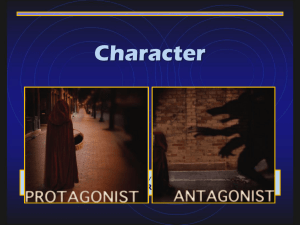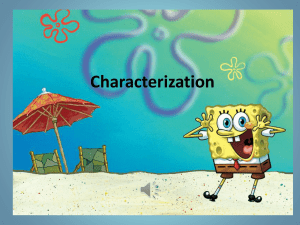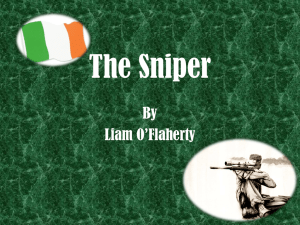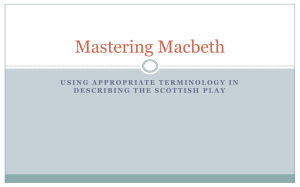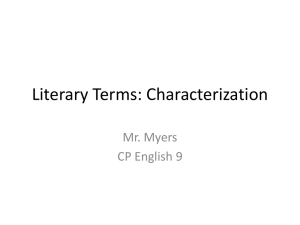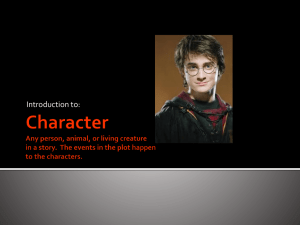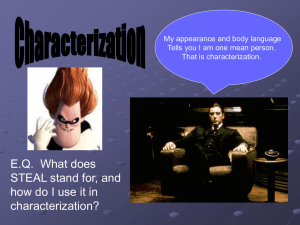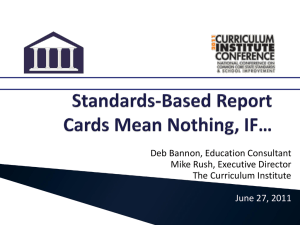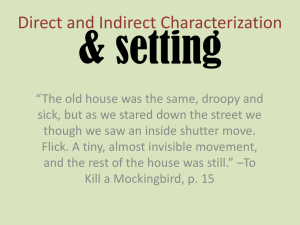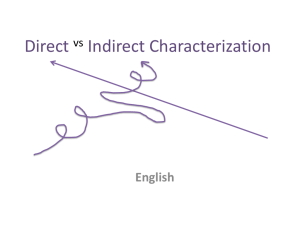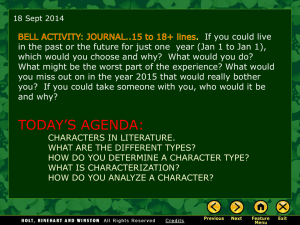Character Types & Characterization Methods in Literature
advertisement
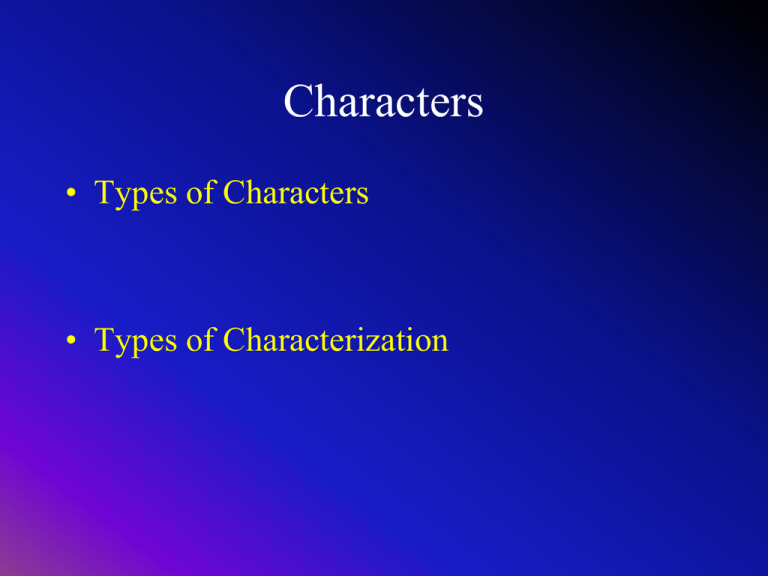
Characters • Types of Characters • Types of Characterization Character The people (or animals, items, etc. presented as people) appearing in a literary work. Types of Characters: Round Flat Dynamic Static Development Change Amount of character development • Round Character: is fully developed, convincing, true to life. • Flat Character: stereotyped, shallow, often symbolic, not fully developed; know only one-side of the character. Amount of change in a character • Dynamic Character: undergoes some basic character change in story; that is characterized by energy of effective action: vigorously active or forceful;energetic • Static Character: does not change in the course of the story or changes very little Methods of Characterization 1. Direct 2. Indirect Direct Characterization 1. Direct: “he was an old man..” (The Old Man and the Sea) • Information provided to the reader from the author • Details stated as facts Methods of Characterization Indirect Characterization • Physical appearance Usually Hamadi was wearing a white shirt, shiny black tie, and a jacket that reminded Susan of the earth’s surface just above the treeline on a mountain—thin, somehow purified. from “Hamadi” by Naomi Shihab Nye Methods of Characterization Indirect Characterization • Actions Disregarding the song of the birds, the waving green trees, and the smell of the flowers, Jimmy headed straight for a restaurant. from “A Retrieved Reformation” by O. Henry Methods of Characterization Indirect Characterization • Own Words “I cannot help these people yet,” he calmly told me. “But when the time comes, I will help them all that I can.” from “Passage to Freedom: The Sugihara Story” by Ken Mochizuki Methods of Characterization Indirect Characterization • Thoughts and feelings Although she warned that she hadn’t tried her hand at baking sweets for some time, I was certain that like everything else about her the cookies would be perfect. from “Mrs. Flowers” by Maya Angelou Methods of Characterization Indirect Characterization • Character relationship “Now, Valentine,” said the warden, “you’ll go out in the morning. Brace up, and make a man of yourself. You’re not a bad fellow at heart. Stop cracking safes, and live straight.” from “A Retrieved Reformation” by O. Henry Methods of Characterization

